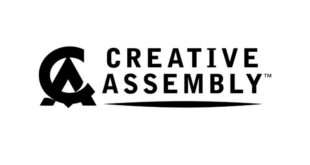In December 2013, the United States introduced an educational initiative called ‘Hour of Code’, designed to teach children the basics of coding in the hopes of inspiring more students to seek a career in computer programming.
Several games companies were inspired by this, launching their own ‘Hour of Code’ ventures alongside that of the US campaign. But London-based develop Kuato has gone one step further. Or rather one hundred steps further.
For a start, the studio – which specialises in educational games – is offering 100 hours of free coding sessions to schools throughout the UK. And these sessions will revolve around building killer robots.
Got your attention? Thought so.
Kuato’s team, which combines experience from heavy-hitters like EA, Konami and Sony, is basing these sessions around its robot combat game Hakitzu, which teaches children the basics of JavaScript. Successfully typing in codes is the only way to control your robot in battle, and also demonstrates the variety of codes and commands used in programming.
The first session is due to take place next week at Mossbourne Community Academy in Hackney with a class of Year 10 pupils. Kuato is calling for teachers from both primary and secondary education to register their interest in the coding sessions – particularly as coding is expected to be more prominent in the new curriculum that comes into effect from September 2014.
We spoke to Kuato’s technical lead Scott Lamb (pictured) to find out more about the scheme.
How does it teach them the skills needed for coding? Why is this an effective method?
Hakitzu teaches a number of introductory concepts to get a would-be programmer started. Players will learn the rudiments of JavaScript syntax, how to make function calls and pass in parameters to get the results they want. Logical thought and problem-solving is essential for success in programming, and before we ask the player to write a line of code, we begin by having them think about the solution first.
It also provides an exciting context in which to learn – you just need to open one page of the many self-study books or online courses to see how dry and boring they would be for a child. We teach these concepts in a rich world of larger-than-life combat robots – you have a reason for writing this script, and a clear goal to obtain. When you get it right, instead of “Hello, world” coming out of the console, we give the player explosions. Which isn’t to say wonderful books don’t exist, but the field is saturated with material that can intimidate or turn away the novice.
Where did the idea for this initiative come from?
The idea was partially inspired by the recent US ‘Hour of Code’ initiative, which introduced over 10m students to coding through tutorials and games. This is because by 2020, there will be significantly more computer programming jobs available than students studying the subject. So we need to inspire the next generation of programmers. What set this idea apart was that it concentrated on developing the thought processes and logic systems that pupils could then apply to code – a concept we’re huge fans of at Kuato.
There was also a feeling within the company that we wanted to see the positive impact our games were having, first hand. By visiting classrooms ourselves and gauging the responses of students, we can get feedback from the pupils themselves: what they liked, what they didn’t like, what worked, what didn’t work.
I’ll give an example: we’d worked hard on getting the difficulty ramp for absolute beginners as smooth as we could and we thought we’d cracked it. However, as part of the development process, we observed different groups of children playing the game and discovered a range of sticking points. Because we’d been so close to the product, we hadn’t realised they existed at the time. The kids explained to us which parts they were having problems with, which meant we could go back to the studio armed with the knowledge of how to avoid that in the final game.
What age of kids is this aimed at?
The initiative is open to all primary and secondary institutions, therefore is primarily targeted at children between the ages of eight and 16. However, the coding skills Hakitzu develops are useful at any age – whether you’re a child or adult – so there is no upper age limit.
Attitudes to programming need to change. It must be demystified, and those who believe coding isn’t “for them” must be convinced that coding is for absolutely everybody.
Why is it important to explain the requirements of coding to kids at this age?
Really, it’s getting increasingly important to introduce children to computer literacy as early as they can grasp it, in the same way that we introduce literacy, numeracy and languages.
Programming is at the heart of computer science, but it’s currently (culturally) shrouded almost in mysticism, in the way a layperson might speak about quantum physics. But in actuality, almost anybody can learn at least some level of programming and find it illuminating, enjoyable and useful.
Breaking down this sort of barrier and getting a first toe in the water, to foster an interest as early as possible is hugely important. The world is going to need more and more programmers and these shouldn’t and needn’t be an elite cabal – they’re anybody who is interested in learning, making, solving problems, being creative. And that really means everybody.
What impact will including coding in the curriculum from September onwards have on the potential for future generations of coders? Do you expect schools to get behind it?
Recent changes to the UK Computer Science curriculum make teaching the subject much less prescriptive. There will be lots of opportunity for teachers to use their own creativity in what is a highly creative subject. Ideally, teachers of Computer Science should properly learn to code themselves; to discover the joy of it and learn enough that they pursue it in their spare time and see it everywhere, as pretty much every programmer does. Introducing code to the curriculum is nonetheless something of a shift, and many teachers may need support in preparing for this change.
There is clearly a hunger for such a change in direction as evidenced by the success of code.org’s recent Hour of Code initiative and recent discussions following BETT 2014. Hakitzu was designed to give teachers the confidence to introduce programming. We want students to have practical experience when it comes to writing and designing programmes; this is going to add to the mix of skills that employers will be looking for in the future.
What does the industry need to do before that to educate teachers and schools about coding?
The industry has been leading the reform process so far, as many of the initiatives like Code Club were set up by programmers to transfer their knowledge and inspire the next generation outside of the current education system. The recently announced government scheme, run by the British Computer Society, will help teachers develop the skills, but, as an industry, we need to widen our support to include teachers.
We know this will initially be a huge change for teachers (particularly primary teachers), but we are helping them along the way by providing teacher packs for Hakitzu as well as for our future products. We are also connecting with teachers on Twitter and other social networks, where we can answer their questions.
Outside of the classroom, attitudes to programming need to change. It must be demystified, any stigma must be removed and those who believe coding isn’t “for them” (all too regularly this means women and older students) – must be convinced that coding is for absolutely everybody. The subject must be considered accessible to all and made that way because it really is.
What experience does the team have in games development? What games have you worked on?
The team here come from a wide range of fields, all of whom bring different experience to the creation of educational games.
On the games side, we have staff who previously worked for EA, Konami and Sony. Alongside them are a number of experts from the educational field, including our director of learning David Miller, whose creative approaches to technologies in the classroom led to him being awarded the Pearson/Guardian UK Teacher of the Year in 2008.
Finally, we have a number of AI specialists who have experience of using SRI’s intelligent personal assistant technology. We’re really excited with the projects this group are working on, and the impact it could have on how future Kuato titles help children learn.
As an industry, we need to open our doors and invite students and teachers into the creative process, building products that not only teach the curriculum, but make learning fun and engaging.
What’s the next step after 100 Hours of Code? How can Kuato and the industry continue this initiative?
The 100 Hours of Code initiative is just the start for us. We will continue to build strong relationships with schools, teachers and students. In 2014, we’re looking to delve deeper into the conversation around gaming, learning and the curriculum, so expect to see a lot more from the studio this year.
As an industry, we need to open our doors and invite students and teachers into the creative process, building products that not only teach the curriculum, but make learning fun and engaging. We also need to undertake more outreach and get involved in local Code Clubs and similar organisations to inspire the next generation.
What can students do to learn more, and how can we encourage this?
There are many sites and organisations that are inspiring young people to discover and experiment with coding. We would exhort students simply to take a look and get cracking!
You have a profusion of fantastic online material at your disposal (though it can be intimidating to know where to start so it’s incumbent on those of us in industry to shout from the rooftops about the approaches that really excite us). Sites like as Codecademy, Young Rewired State, w3schools and the Khan Academy are wonderful places to get started.
Fire up your computer, dive into a course that fits and you can become a coder! There needn’t be any additional cost – all you need is time and enthusiasm. And you’re not alone – the online communities around these sites are full of insight and inspiration from millions of students just like you (all ages and walks of life).

 MCV/DEVELOP News, events, research and jobs from the games industry
MCV/DEVELOP News, events, research and jobs from the games industry



